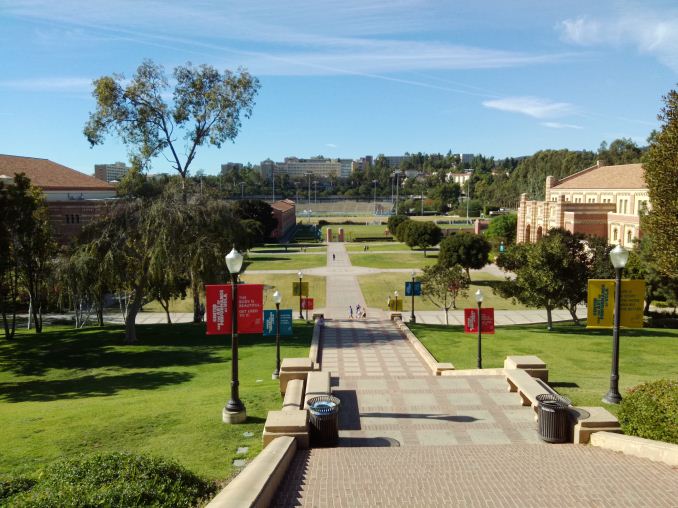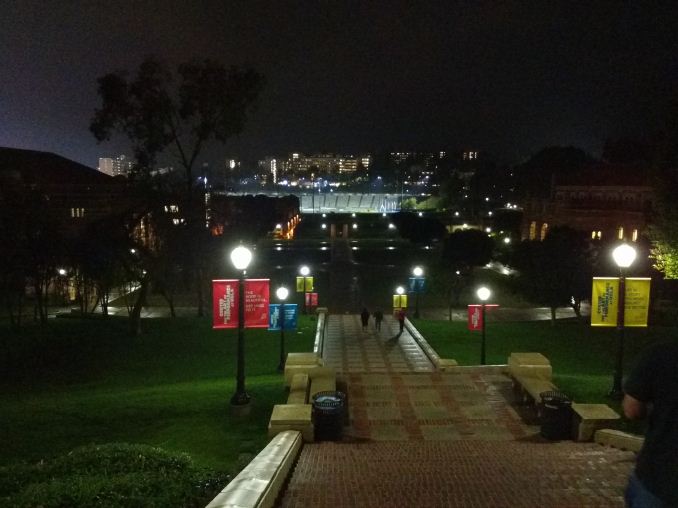The Google Nexus 9 Review
by Joshua Ho & Ryan Smith on February 4, 2015 8:00 AM EST- Posted in
- Tablets
- HTC
- Project Denver
- Android
- Mobile
- NVIDIA
- Nexus 9
- Lollipop
- Android 5.0
Camera
In the case of tablets, cameras have become increasingly important. While it’s still a bit awkware to take photos and video with a tablet, there is still value to having decent cameras on a tablet. For the front-facing camera, it’s pretty clear that there is a lot of value to be had here as the tablet can be a good tool for video conferencing in lieu of a bulky laptop. The rear camera can also have value, but mostly for taking a photo of a whiteboard or simply when opportunity dictates. To fulfill these duties, the Nexus 9 has been outfitted with a rather standard set of cameras. On the rear, we see an 8MP, 1/4 inch format sensor while the front-facing camera has a 1.6MP, 1/5 inch sensor. I’ve included a table of the full camera specs below in the interest of readability.
| Camera Specifications | |||
| Google Nexus 9 | |||
| Front Camera | 1.6MP | ||
| Front Camera - Sensor | OV9760 (1.75µm, 1/5") |
||
| Front Camera - Focal Length | 2.18mm | ||
| Front Camera - Max Aperture | F/2.18 | ||
| Rear Camera - Sensor | IMX219 (1.12 µm, 1/4") |
||
| Rear Camera - Focal Length | 3.097mm (33mm eff) | ||
| Rear Camera - Max Aperture | F/2.4 | ||
This is pretty much par for the course when it comes to tablets. The optics aren’t particularly remarkable in one way or another, as I haven’t noticed any obvious design issues in any of my test photos, and the focal length isn’t excessively long or short. The UI that comes with Google Camera in general is unremarkable as well. This isn’t a slight against it, but the fact that I don’t have anything significant to complain about is a good step forward from the past when the design of the camera UI was a significant friction point in the user experience.
The one issue that I’ve noticed is that the camera’s auto focus and capture speed are significantly worse than what I saw on the iPad Air 2. Unfortunately, it isn’t really possible to have standardized testing here as a tablet can’t be mounted to a tripod for testing. As there isn’t a custom ISP in the Nexus 9, it’s likely that the Tegra ISP isn’t up to scratch here as I noticed that AF speed is similar to what I saw on the SHIELD Tablet despite differing camera modules.
For the most part, there’s not much else to be said about the camera systems on the Nexus 9 as they aren’t quite as heavily focused as one would see in the smartphone space. All that’s left to do is test the cameras themselves.
In this basic test of daytime photo quality, we can see that HTC has done a reasonably good job of processing the image as noise is generally suppressed without an enormous loss of detail. However, there really isn't a lot of detail to speak of in this sensor. There's also a decent amount of dynamic range as there's detail in the shadows but there's no HDR mode to compensate in cases where there is insufficient dynamic range. HTC continues to cap the base ISO to 100, which seems to be a strange move in this situation as the shutter speed is more than high enough to drive the sensor gain even lower.
In this low light scenario, the Nexus 9 effectively falls flat on its face. With an ISO of 3200 and a shutter speed of 1/12s, there's effectively no detail past the first set of steps. Luminance noise is strong and present throughout the image, and color noise also has a tendency to creep in as well. Given the sheer size of the tablet, it's also hard to stably hold the tablet to take a photo despite the relatively fast 1/12s shutter speed. One should really avoid using this to take photos in low light unless there's no other choice.
In video, detail generally tends to be about the same as what one can find in photos, which means that daytime footage should have decent quality but low light rapidly reduces the quality as the sensor gain must increase. In the case of the Nexus 9, we see that video tops out at 1080p30 maximum with no slow motion available, and that the file is in a .3gp format instead of a standard mp4 that most are familiar with. The video itself is encoded with H.264 baseline at 14 Mbps, which is likely to be below the maximum that the encoder can support. There doesn't appear to be any significant level of stabilization in this case, which is a bit disappointing although not entirely surprising. There is also a lot of focus hunting throughout the video, which is quite distracting.
Overall, it seems that the camera on the Nexus 9 is an acceptable one for a tablet, although this would effectively be unacceptable on a high-end smartphone. The camera itself produces decent output in daytime but really suffers in low light due to the small pixel size, relatively narrow aperture, and small sensor. There are also a lot of issues with consistent and reliable auto focus, as it often takes multiple focus runs to get the camera to focus properly on even high contrast objects. Each focus run takes a significant amount of time as well, which hurts the shooting experience when combined with the somewhat long capture latency. I would avoid using this camera unless it is strictly necessary, although it isn't terrible as a camera for cases such as document scanning.
























169 Comments
View All Comments
MonkeyPaw - Wednesday, February 4, 2015 - link
Maybe I missed it, but can you comment on browser performance in terms of tabs staying in memory? I had a Note 10.1 2014 for a brief time, and I found that tabs had to reload/refresh constantly, despite the 3GB of RAM. Has this gotten any better with the Nexus and Lollipop? Through research, I got the impression it was a design choice in Chrome, but I wondered if you could figure out any better. Say what you want about Windows RT, but my old Surface 2 did a good job of holding more tabs in RAM on IE.blzd - Friday, February 6, 2015 - link
Lollipop has memory management issues right now, as was mentioned in this very article. Apps are cleared from memory frequently after certain amount of up time and reboots are required.mukiex - Wednesday, February 4, 2015 - link
Hey Josh,Awesome review. As I'm sure others have noted, the Denver part alone was awesome to read about! =D
gixxer - Thursday, February 5, 2015 - link
There have been reports of a hardware refresh to address the buttons, light bleed, and flexing of the back cover. There was no mention of this in this article. What was the build date on the model that was used for this review? Is there any truth to the hardware refresh?Also, Lollipop is supposed to be getting a big update to 5.1 very soon. Will this article be updated with the new Lollipop build results? Will FDE have the option to be turned off in 5.1?
blzd - Friday, February 6, 2015 - link
Rumors. Unfounded rumors with zero evidence besides a Reddit post comparing an RMA device. All that proved was RMA worked as intended.The likelyhood of a hardware revision after 1 month on the market is basically 0%. The same goes for the N5 "revision" after 1 month which was widely reported and 100% proven to be false.
konondrum - Thursday, February 5, 2015 - link
My take from this article is that the Shield Tablet is probably the best value in the tablet market at the moment. I was really shocked to see the battery life go down significantly with Lollipop in your benchmarks, because in my experience battery life has been noticeably better than it was at launch.OrphanageExplosion - Thursday, February 5, 2015 - link
I seem to post this on every major mobile review you do, but can you please get it right with regards to 3DMark Physics? It's a pure CPU test (so maybe it should be in the CPU benches) and these custom dual-core efforts, whether it's Denver or Cyclone, always seem to perform poorly.There is a reason for that, and it's not about core count. Futuremark has even gone into depth in explaining it. In short, there's a particular type of CPU workload test where these architectures *don't* perform well - and it's worth exploring it because it could affect gaming applications.
http://www.futuremark.com/pressreleases/understand...
When I couldn't understand the results I was getting from my iPad Air, I mailed Futuremark for an explanation and I got one. Maybe you could do the same rather than just write off a poor result?
hlovatt - Thursday, February 5, 2015 - link
Really liked the Denver deep dive and we got a bonus in-depth tablet review. Thanks for a great article.behrangsa - Thursday, February 5, 2015 - link
Wow! Even iPad 4 is faster than K1? I remember nVidia displaying some benchmarks putting Tegra K1 far ahead of Apple's A8X.behrangsa - Thursday, February 5, 2015 - link
Anyway to edit comments? Looks like the K1 benchmark was against the predecessor to A8X, the A7.